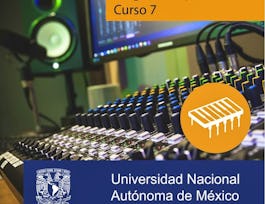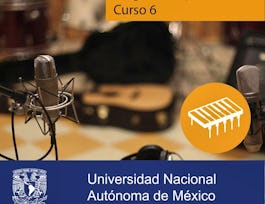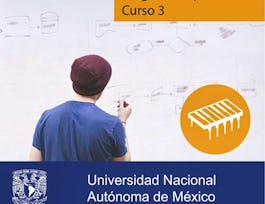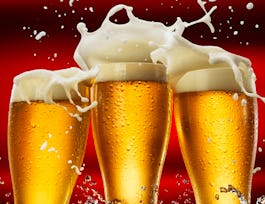With its roots in ancient cultures as early as 6,000 BC, wine has long been part of the human experience. Today, increasing worldwide interest in wine and its complexities and varieties has created an international market valued at $304 billion annually. For the learner who is just getting started in the study of wine, this course will help you take the first steps toward understanding the physiological process of wine tasting. The first module will explore types of wine and help you set up your own tasting. You’ll also begin to build a sensory vocabulary. In module 2 you will review classic wine types of the world and set up flights of specific wines. Later we’ll examine the various faults and defects that can appear in wine as well as techniques for spotting problems. In week 4 we’ll delve into the complex world of wine and food pairings, and its “seven deadly sins.” The course will culminate in a peer review project in which you will apply the knowledge and sensory techniques you have developed throughout the course to assess a specific wine.


Wine Tasting: Sensory Techniques for Wine Analysis
Taught in English
Some content may not be translated
75,560 already enrolled
(503 reviews)
Details to know

Add to your LinkedIn profile
4 quizzes
See how employees at top companies are mastering in-demand skills


Earn a career certificate
Add this credential to your LinkedIn profile, resume, or CV
Share it on social media and in your performance review

There are 5 modules in this course
In this first module, we’ll take the first steps on our journey through the various categories of wines, starting with the flavor profiles of classic New World and Old World wines. We’ll also identify and describe flavor groups of wine and discuss sensory physiology including the visual, olfactory, textural, and taste aspects of various wines. We’ll also analyze how climate can affect the grape and wine flavor expression, and we’ll discuss the concept of "terroir". Finally, you will create a set of basic taste standards for practicing blind tasting.
What's included
18 videos1 reading1 quiz6 discussion prompts
In this module, the journey continues and we will compare and contrast the flavor profiles of eight classic red varietals and eight classic white varietals. We’ll also discuss the growing requirements for each varietal as well as their cultural and historic background and growing locations. At the conclusion of this module, you will write a descriptive analysis of the aroma attributes you identify in a particular wine. Finally, you’ll create flavor standards to help you develop your sensory vocabulary.
What's included
24 videos1 reading1 quiz3 discussion prompts
Is there something wrong with this wine? This week we’ll examine the philosophy behind what actually constitutes a fault in wine. We’ll identify the most often-encountered faults and explain how to recognize them as well as determine what caused them. We’ll also examine the Old World and New World sensibilities toward some of these faults, and discuss how some so-called faults may really be attributes that contribute to a wine’s complexity. We’ll differentiate between a fault and a defect and examine the range of classic faults and their origins. You’ll learn techniques for spotting problems and create wine defect sniff standards to practice fault recognition.
What's included
13 videos1 reading1 quiz2 discussion prompts
Can you drink red wine with fish? In this module we’ll discuss the often perplexing question of how to pair wine with food, and the physical, structural, textural, and aromatic aspects of both the "wine side" and the "food side" of the equation. We’ll discuss ways to improve your ability to make flavorful choices and determine the structure and "weight" of a wine. To help you predict a good food match, we’ll talk about the process of flavor profiling and how to decide whether to change a wine or food to make a pair work. Finally, we’ll discuss the "seven deadly sins" of wine and food pairing, and you’ll develop a personal wine and food scoring system.
What's included
11 videos1 reading1 quiz2 discussion prompts
In this final module, we’ll conclude our journey into wine tasting with a project that will demonstrate your understanding of the physiological process of wine tasting and the sensory techniques required for accurate wine analysis. You’ll apply the skills you have developed throughout this course to making a critical evaluation and description of a specific wine. Working with fellow learners in this peer review process, you will demonstrate your ability to describe the appellation, climate, winery, varietal and winemaking style as well as describe the visual, and tactile aspects of the wine. You’ll also describe the flavor and aroma of the wine, and make decisions about the best and worst food pairings for the wine.
What's included
1 video1 peer review1 discussion prompt
Instructor

Offered by
Recommended if you're interested in Personal Development

Universidad Nacional Autónoma de México

Universidad Nacional Autónoma de México

Universidad Nacional Autónoma de México

University of California, Davis
Why people choose Coursera for their career




Learner reviews
Showing 3 of 503
503 reviews
- 5 stars
82.14%
- 4 stars
11.50%
- 3 stars
1.98%
- 2 stars
1.19%
- 1 star
3.17%
New to Personal Development? Start here.

Open new doors with Coursera Plus
Unlimited access to 7,000+ world-class courses, hands-on projects, and job-ready certificate programs - all included in your subscription
Advance your career with an online degree
Earn a degree from world-class universities - 100% online
Join over 3,400 global companies that choose Coursera for Business
Upskill your employees to excel in the digital economy
Frequently asked questions
To properly complete this course, you are expected to purchase wine and materials on your own to follow along with the instructor. You will need to purchase wine glasses (if you do not already have a proper set as outlined in the lecture), up to 16 bottles of wine, and small amounts of food to experience this course fully. We anticipate you will spend anywhere from $150-$250 USD for the materials in this course.
Access to lectures and assignments depends on your type of enrollment. If you take a course in audit mode, you will be able to see most course materials for free. To access graded assignments and to earn a Certificate, you will need to purchase the Certificate experience, during or after your audit. If you don't see the audit option:
The course may not offer an audit option. You can try a Free Trial instead, or apply for Financial Aid.
The course may offer 'Full Course, No Certificate' instead. This option lets you see all course materials, submit required assessments, and get a final grade. This also means that you will not be able to purchase a Certificate experience.
When you purchase a Certificate you get access to all course materials, including graded assignments. Upon completing the course, your electronic Certificate will be added to your Accomplishments page - from there, you can print your Certificate or add it to your LinkedIn profile. If you only want to read and view the course content, you can audit the course for free.


